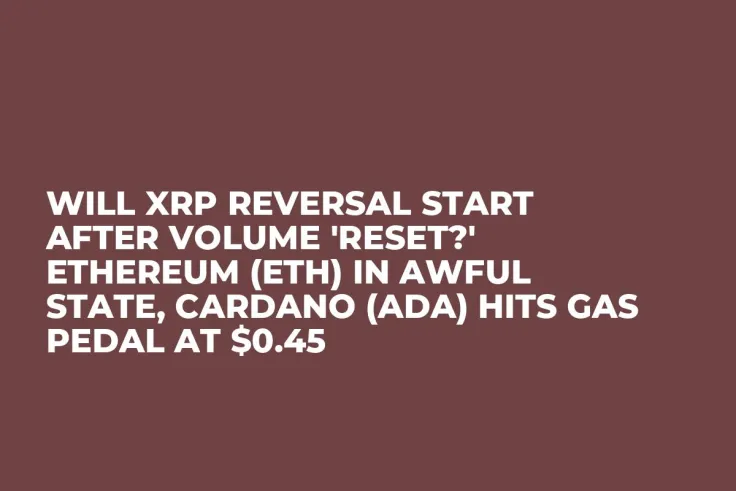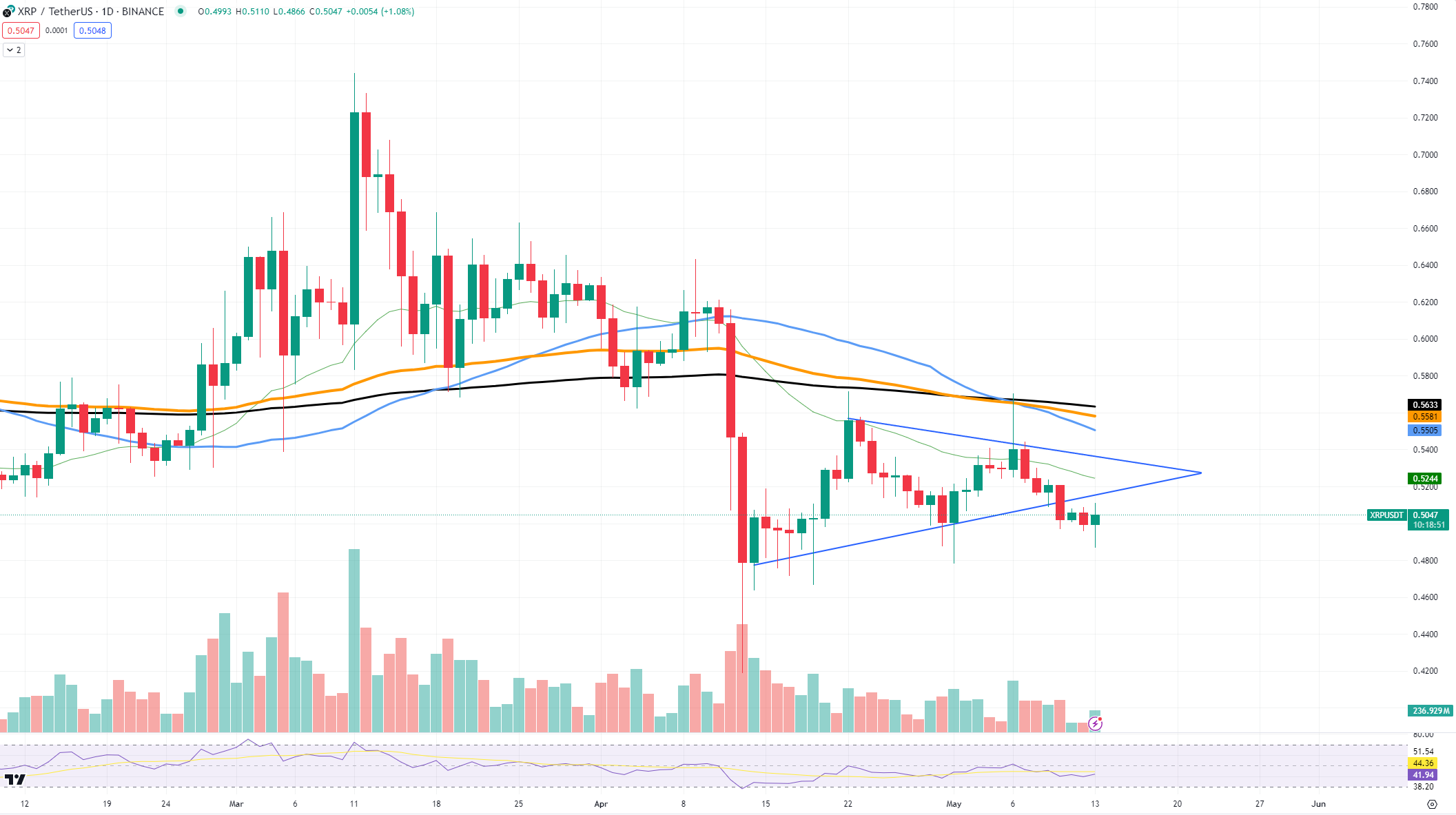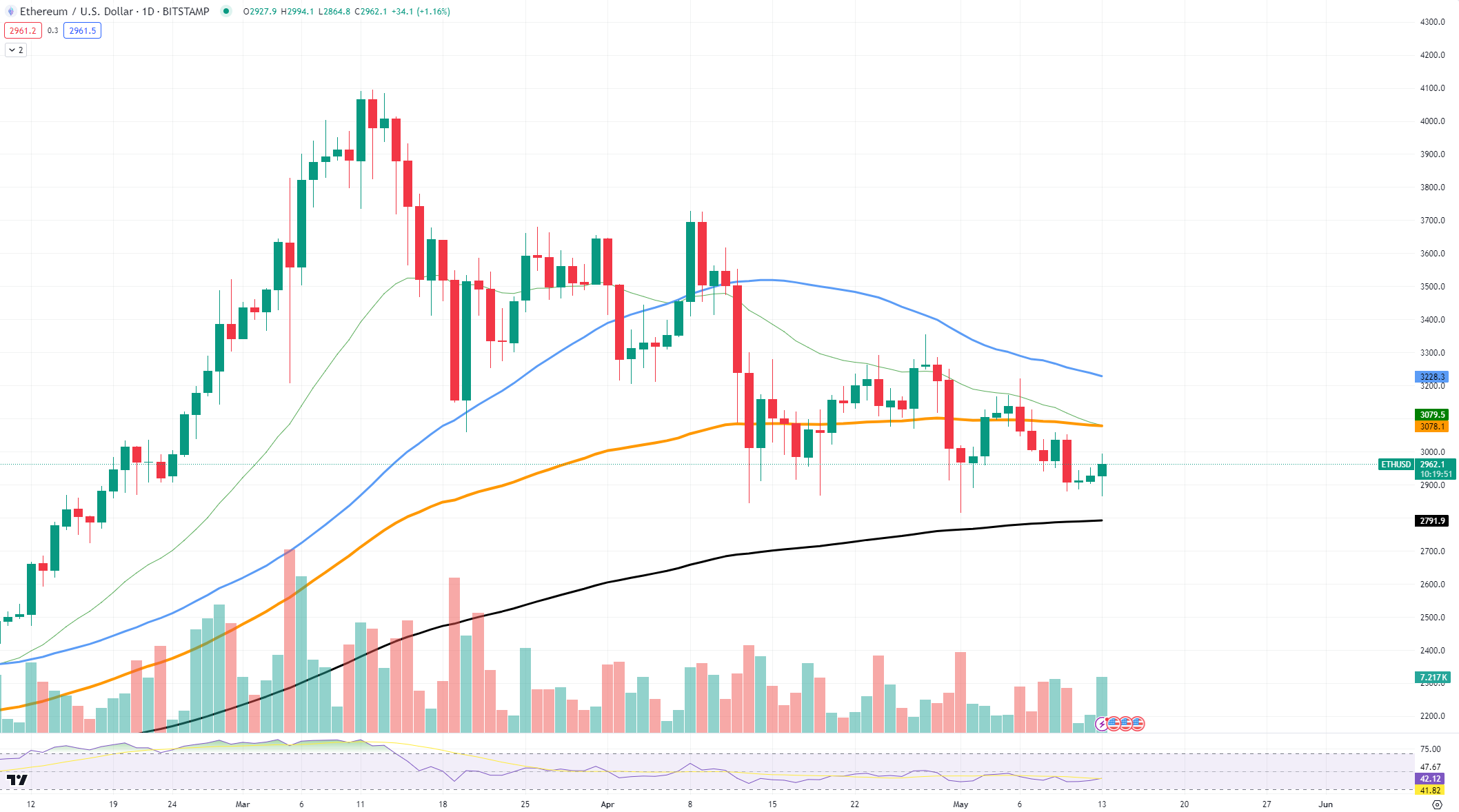
Disclaimer: The opinions expressed by our writers are their own and do not represent the views of U.Today. The financial and market information provided on U.Today is intended for informational purposes only. U.Today is not liable for any financial losses incurred while trading cryptocurrencies. Conduct your own research by contacting financial experts before making any investment decisions. We believe that all content is accurate as of the date of publication, but certain offers mentioned may no longer be available.
One asset that stands out in its recent performance is XRP, surprisingly. The latest charts show a decrease in trading volume for XRP, which might set the stage for significant changes in its price movement. This reduction in volume can potentially act as a "reset" for the asset's dynamics.
A sharp drop in volume often indicates that the existing price trend might be exhausting itself. For XRP, this could mean that any new influx of liquidity — no matter its size — could have a magnified impact.

Essentially, with fewer trades happening, each new purchase or sale carries more weight, potentially leading to more pronounced price shifts. This creates an environment ripe for a possible reversal, especially if market conditions align favorably.
A critical point to consider is the recent support level around $0.5. This price point has acted as a psychological barrier, where the value of XRP has bounced back slightly after approaching or touching this level. The sustainability of this support level is crucial; it represents a threshold that might either bolster confidence in a potential recovery or signal a further decline if it fails to hold.
However, the larger picture includes the overall recovery of the market. The fate of XRP's reversal is not solely dependent on its own volume and price actions.
Cardano surges
Cardano slightly crossed the $0.45 mark, but it leaves a lot to be desired. However, it might be the first sign of the strength we all anticipated.
The aforementioned price point has previously acted as both support and resistance, making it a crucial indicator of future movements. The current surge is particularly noteworthy as it suggests growing bullish sentiment among investors, potentially setting the stage for further gains.
Looking at the chart, Cardano has been trading below key moving averages, which typically suggest bearish control. However, the recent push above $0.45 marks an important pivot point. It indicates that ADA is gaining momentum, possibly challenging the next resistance levels.
The trading volume, though not exceptionally high, has been steady, providing stable ground for the recent price increase. Furthermore, the Relative Strength Index (RSI) shows that ADA is not in the overbought territory, which bodes well for potential upside without immediate risks of a pullback due to overvaluation.
Ethereum's position
Not only has ETH recently lost the crucial $3,000 threshold, but alarming news has surfaced about the activities linked to a notorious hack. According to recent reports, the hacker responsible for the 2017 Parity Multisig Wallet breach has begun moving stolen funds, specifically 3,050 ETH, per Etherscan. What's more concerning is the significant quantity of Ethereum still under the hacker’s control — approximately 83,017 ETH, valued at over $247 million at current prices.
From a technical perspective, Ethereum's price chart paints a grim picture. The asset has been consistently trading below the 50-day and 100-day moving averages, signaling a bearish trend with no immediate signs of recovery.

The recent loss of the $3,000 support level has aggravated the negative sentiment, suggesting potential further declines if the trend continues. This level had previously served as a psychological benchmark for bullish sentiment, and its breach could lead to accelerated sell-offs.
The revelation of the 2017 hack funds being moved could have dire implications for Ethereum’s market stability. Such events typically instill fear in investors, especially those concerned about potential market manipulation or increased selling pressure from the large volumes of ETH that might be dumped on the market.

 Dan Burgin
Dan Burgin Vladislav Sopov
Vladislav Sopov U.Today Editorial Team
U.Today Editorial Team